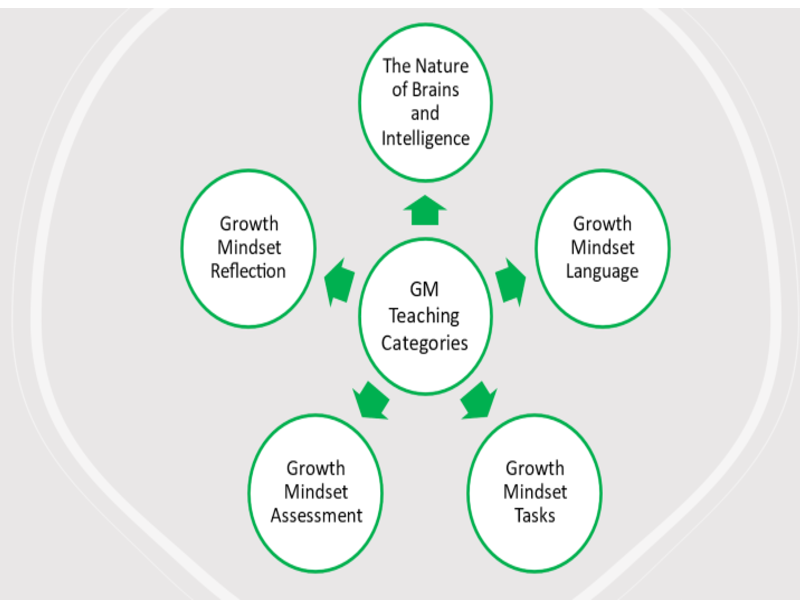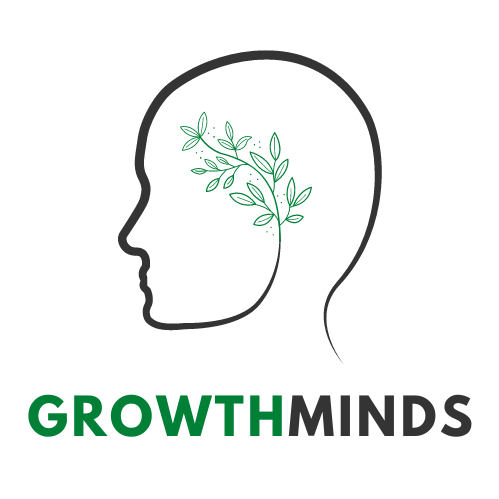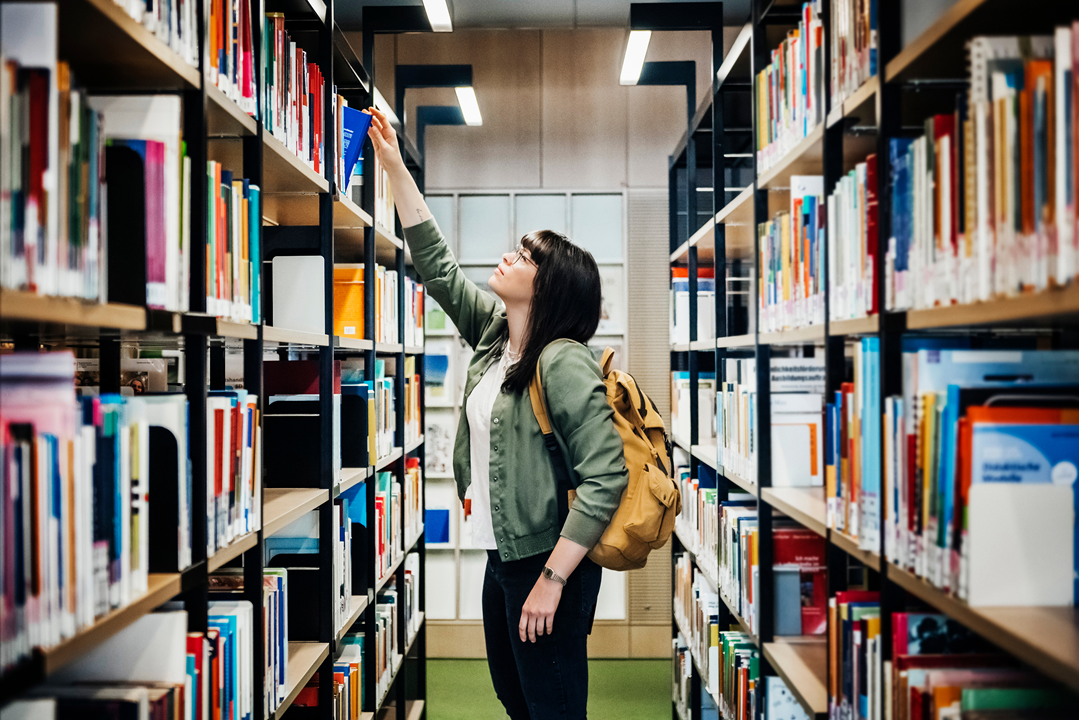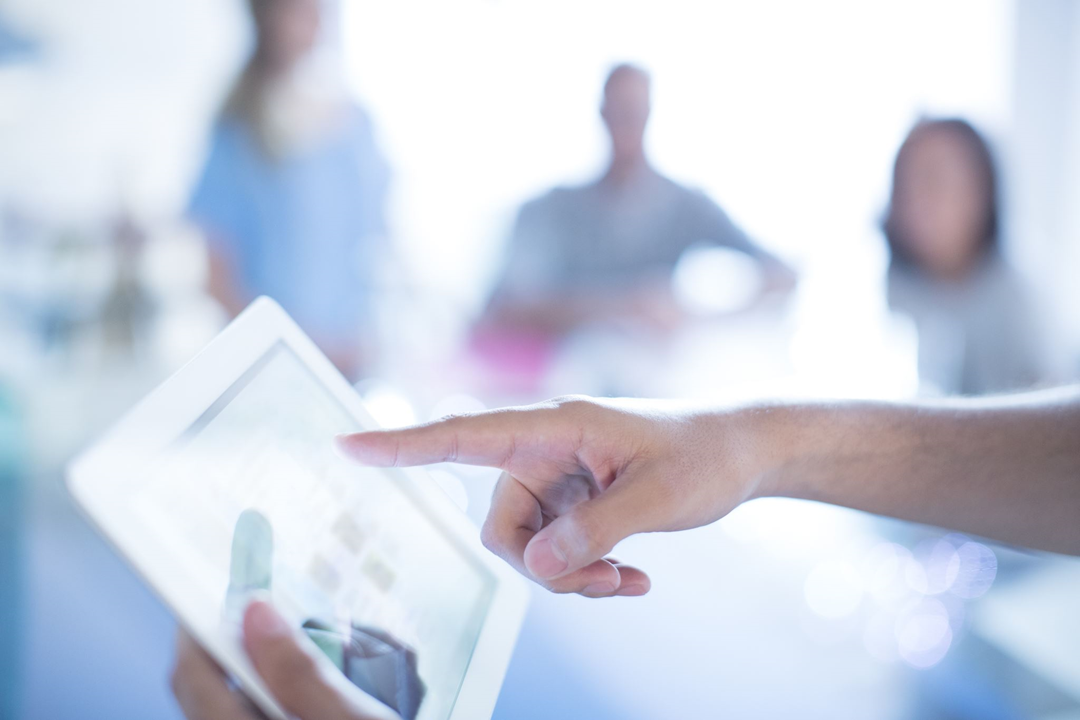COLLECTION OF GM TOOLS
In this section, articles and collection of GM tools prepared by our project team based on the literature and that instructors can interest in are included.
Blanka Tacer
Available in TR/SLO/GER/ROM, please click on the link.

| Category | Description |
| The Nature of Brains and Intelligence | Introducing students how our brain works, how we learn, fixed and growth mindset. Teaching students about brain plasticity Mindset interventions may be more influential if they integrate the evolving nature of science and information about brain plasticity in adulthood. Gathering students’ experience about how mindset in being developed How their own experiences and observations affected their mindset beliefs (e.g., their own academic experiences, observing peers’ experiences). How authority figures (e.g., parents and teachers) talk about intelligence is influential. |
| Growth Mindset Language | Demonstrating the connection between learning and result Emphasizing effort, mistakes, brain growth, reflection about learning, high expectations, growth-oriented feedbacks. You can encourage students to think deeply and communicate to them that they can achieve at a high level, but it takes persistence and character. It requires an understanding that even if success does not come immediately, they must keep trying (Duckworth 2016; Tough 2012). Keep the conversation about the growth mindset alive Provide examples of growth mindset Praise effort not talent It is necessary to change these messages from ones that praise intelligence to ones that praise effort and tell students they can achieve; it may just take more time and practice, and it won’t happen overnight (Boaler 2016; Dweck 2006; Kohn 2015; Pink 2009). This means that instead of saying “you are so smart,” you can say, “I loved how you solved that problem. You really thought outside the box.” Promoting positive self-talk Explicitly teaching students how to use positive self-talk helps them develop essential skills and the confidence necessary to be successful in learning. High expectations for all students Wagner (2012) emphasizes that the message we send to our students by having high expectations is that they are capable. When trying to reach high expectations, students see failures as a result of those high expectations versus lack of potential, and by contrast, low expectations will cause students to question their intellectual ability. |
| Growth Mindset Tasks | Deliberate practice, mistakes and challenges Very often, students do not need to complete 100 problems in order to demonstrate understanding; sometimes they only need to complete one very challenging problem that extends on the concepts taught in class. Repetitive exercises that require a lot of time to complete can be counterproductive (Rosario et al. 2019). After finishing the one problem, they feel a much greater sense of accomplishment. There are fields of study, however, where exposure to multiple tasks is essential (e.g. English tenses). When this is the case, it is essential for the students to see purpose and meaning in the tasks. Integration of the tasks with real life problems is thus essential. It is also beneficial if the students can develop real life skills in problems they are faced with. This mastery of a challenging skill also boosts their self-efficacy (Bandura and Schunk 1981). When they go over that problem as a class, have students lead the discussion (Abdulrahim and Orosco 2020). Encourage deliberate and reflective practice. Deliberate practice is the act of isolating what is not working and mastering the challenging area before moving on, allowing the new information to become encoded in memory (Mulligan, 1998). Desirable difficulty Create opportunities for desirable difficulty. Working through problems is how we learn: It is better to let students spend some time trying to fix their problems than it is to just give them the answer and go on. Providing opportunities for mistakes without punishment. Normalize mistakes and failures. Recognizing mistakes not as an enemy to be vanquished but as a friend with much to teach us. Multiple exposure Multiple exposures provide students with multiple opportunities to encounter, engage with, and elaborate on new knowledge and skills. Adherence to learning goals rather than performance goals Tendency in students to pursue goals aiming at increasing their ability, according importance to learning (academic importance belief), rather than proving their ability to others. Step-by-step Scaffold learning via specific steps/activities, scaffold a final goal into the smaller goals showing a connection between effort and result. Choice Give students choice on assignments. Motivation increases when students are given more control, and this increased motivation can, in turn, promote a growth mindset (Howard and Whitaker 2011). Students vary in the way they communicate what they learn. On big projects, give them the opportunity to present their work in different ways; for example, a blog, a video presentation, or a booklet. |
| Growth Mindset Assessment | Give the students opportunities to test themselves, rather than just study or practice the new material. Students sometimes possess intrinsic motivation in which they receive pleasure from the learning process itself without the need for a reward (Gottfried 1985). They possess pride in their accomplishment of a difficult task. You can also create tasks that stimulate their thinking. Students enjoy the challenge of creating their own tests. Work with students to eliminate the fear of guessing and help them become comfortable starting again if their process is not progressing (Duckworth 2016). You need to determine when to use extrinsic rewards, such as giving a prize or extra points on a test. Rewards and punishments can induce negative thinking or give rise to cheating. |
| Growth Mindset Reflection | Discussion about students’ past experience with overcoming a struggle:
Growth Mindset questions Questioning, by using questions to engage students, to monitor their progress and stimulate their thinking, and also by valuing questions from students as a form of feedback and an opportunity for clarification/extension of learning. |
Barbara Hanfstingl, Samuel Hafner, Gertraud Benke
Available in TR/SLO/GER/ROM, please click on the link.
The following indicators are a result of studying theories and  that are strongly associated with growth versus fixed mindset in the literature. If a teaching activity fulfils many of these indicators, it should be considered a best practice example. However, mind that rarely will it be possible to address all in one situation – which should also not be the purpose of these indicators.
that are strongly associated with growth versus fixed mindset in the literature. If a teaching activity fulfils many of these indicators, it should be considered a best practice example. However, mind that rarely will it be possible to address all in one situation – which should also not be the purpose of these indicators.
Indicator 1: The primary focus of the activity is on developing student’s skills and competencies, as opposed to just letting them demonstrate their skills and competencies.
Indicator 2: The activity provides information about effective learning strategies, and on how to effectively regulate and evaluate learning.
Indicator 3: The activity provides scientific information about neuroplasticity (i.e. the inherent capacity of the brain to form new neural connections throughout life).
Indicator 4: The activity fosters the belief that success is controllable by the student and dependent on their efforts.
Indicator 5: The activity offers different choices to students and thus supports students’ need for autonomy, i.e. they can feel free and self-determined.
Indicator 6: The activity provides structure and feedback that makes students aware that they have learned something and helps them experience their newly acquired competence.
Indicator 7: The activity supports students’ need for feeling significant to others and connecting to others.
Indicator 8: The activity aims at fostering students’ process-focused thinking.
Barbara Hanfstingl, Samuel Hafner, Gertraud Benke
Available in TR/SLO/GER/ROM, please click on the link.
In the following, we describe some theories and  approaches that are strongly associated with growth versus fixed mindset in the literature. We see 1. attributional style and 2. achievement goal orientation as key components of the mindset. In addition, in literature we found relationships with 3. beliefs about mindset and cognitive functioning, we also want to regard them as crucial for the development of indicators. Last but not least, we argue that we need indicators describing environmental aspects associated with growth mindset and found them in 4. self-determination theory. Although in empirical research the influence goes from mindset to these topics, we argue that it is an interaction between mindset and them.
approaches that are strongly associated with growth versus fixed mindset in the literature. We see 1. attributional style and 2. achievement goal orientation as key components of the mindset. In addition, in literature we found relationships with 3. beliefs about mindset and cognitive functioning, we also want to regard them as crucial for the development of indicators. Last but not least, we argue that we need indicators describing environmental aspects associated with growth mindset and found them in 4. self-determination theory. Although in empirical research the influence goes from mindset to these topics, we argue that it is an interaction between mindset and them.
- Attributional Style
Attributional style refers to the ways how people explain to themselves the cause of events and behaviour. These causal inferences impact a person’s feelings, perceptions, and behaviour (Weiner, 2010). A person’s mindset indicates what the cause of a success or failure is attributed to (Dweck, 2000). Moreover, the adaptive function of a growth mindset in light of failure can be related to a person’s attribution. (Diener & Dweck, 1978; Dweck, 1975; Dweck & Reppucci, 1973; Hong et al., 1999). (Leighton & Terrell, 2020; Song et al., 2019).
Attributions have three causal dimensions (1) the locus dimension describes whether the cause is internal or external, (2) the stability dimension describes the source of the cause is something stable or variable over a period of time, and (3) the controllability dimension describes the degree to which a person can control the cause. These dimensions are distinct from actual causes of failure themselves (e.g., effort, ability, task difficulty, and luck). Dweck and Leggett (1988) regarded controllability as key to explaining the positive function of mindset in failure situation. growth mindset increases the perception of controllability of a failure cause, which helps students overcome difficulties or failures. (Song et al., 2019)
In our opinion, attribution style dimensions could be clear indicators for reviewing instructional materials on growth mindset: (1) internal locus of control, (2) variability over time, and (3) the conviction that something is controllable by myself is associated with growth mindset. Contrary, external locus of control, stability over time, and the conviction that something is not controllable by myself is connected to fixed mindset.
- Achievement Goal Orientation
Achievement goals are self-regulatory commitments that provide direction to individuals as they interpret and respond to competence-relevant situations. Student behaviors may vary in learning depending on the type of achievement goal being addressed. The pursuit of achievement goals can be divided into two distinct orientations that are qualitatively different from each other: Mastery goals and performance goals. Whereas mastery goals focus on developing one’s skills, performance goals focus on demonstrating that one’s skills are superior to those of others (Dweck, 1986; Nicholls, 1984). Students pursuing mastery goals are more likely to seek challenges, are intrinsically rather than extrinsically motivated, and show more stamina after failure, while students who pursue achievement goals are more inclined to avoid challenges and are prone to failure (Dweck & Leggett, 1988; Nicholls, 1989). (Sommet & Elliot, 2020; Song et al., 2019)
For example, people with a performance goal view the exertion of effort negatively, often avoid challenges, and seek tasks at a level of difficulty where they are confident of success, while people with a learning goal view exertion positively and seek challenging tasks regardless of whether they expect to succeed (Elliott & Dweck, 1988). The mastery‐oriented learning style seen in people who have a growth mindset is beneficial to learning in many ways. It attracts people to challenging situations where they can develop new abilities and leads them to work with greater effort, persistence, and effectiveness. Because people with a growth mindset view effort to be positively related to success, they are also more likely to take steps to improve in areas where their own performance is currently lacking (Hong et al., 1999). (Hallahan, 2020)
Thus, as second theory underlying the growth mindset indicators we argue to use the achievement goal theory for our purpose (e.g., Elliot & McGregor, 2001). Best practice examples that foster growth mindset are learning goal oriented, performance goals usually are associated to fixed mindset.
In addition to attribution theory and achievement goal theory, we argue to take up certain beliefs about our minds that deal with how our memory and brain work (metacognitive competencies; e.g., Mok et al., 2007), but also beliefs about neuroplasticity. Those beliefs are not crucial for indicating best practice examples for growth mindset, but they foster growth-mindset on a science base: The more I know about my cognitive functioning and neuroplasticity, the more growth mindset is natural for my worldview.
- Beliefs about mindset / metacognition (how does memory/the brain work?)
Mindset: Implicit theories (or implicit beliefs) of intelligence are deeply held perspectives about intelligence, competence, and ability that impact individuals’ motivation, engagement, and achievement. People vary in the degree to which they believe these capacities have the potential to change. Accordingly, some people hold the view that they are bound to particular abilities (entity theory, while others believe that their abilities can develop (incremental theory). Our mindset influences how we think, what tasks we choose for ourselves, our resilience and adaptability, our task engagement and enjoyment, our goals, our persistence, and our attribution styles. Consequently, these implicit beliefs have effects on important outcomes throughout an individual’s life – including through their academic life. (Martin et al., 2020)
Metacognition: Metacognition is frequently defined as “knowing about knowing” or “thinking about thinking.” Highly developed metacognitive skills are associated with good academic performance. A student with greater metacognitive awareness is better able to effectively regulate and evaluate his or her learning, for example, because he or she can select the learning strategy that is most likely to improve learning and memory. Metacognition is comprised of two essential processes: monitoring and control. Monitoring refers to people’s ability to assess their own learning, while control refers to the way in which they regulate their learning using the information acquired through monitoring. (Higham et al., 2020)
Neuroplasticity: Brain plasticity or neuroplasticity is the inherent capacity of the brain to form new neural connections throughout life (Kania et al., 2017). Initially, neuroplasticity was thought to manifest only in childhood, but in the second half of the 20th century, research showed that many aspects of the brain can also be altered in later life (Rakic, 2002).
Last but not least, we want to add self-determination theory because it emphasizes the role of motivation and personality and, more important, it shows how much attention must be paid to fulfillment of basic psychological needs. Thus, in addition to the upper three points, we need to focus also to which an environment is able to promote or indicate a growth mindset.
- Self-determination theory
Self-determination theory (SDT) is a theory of motivation and personality that addresses how the individual interacts with and is dependent on the social environment. SDT defines intrinsic and several types of extrinsic motivation and outlines how these motivations influence situational responses in different domains, as well as social and cognitive development and personality. The basic psychological needs of autonomy (the need to feel free and self-determined), competence (the need to feel effective), and social relatedness (the need to connect closely with others) and their role in self-determined motivation, well-being, and growth are at the core of SDT. It describes the critical impact of the social and cultural context in either facilitating or thwarting people’s basic psychological needs, perceived sense of self-direction, performance, and well-being. (Legault, 2020) The more the three psychological needs are fulfilled, the more students can develop autonomous motivations.
Growth mindset promotes self-determined motivations, while fixed mindset promotes controlled motivations (Dweck & Leggett, 1988). So, we argue to include self-determination as a further theory for the construction of indicators for best practices examples: If an example – in addition to other indicators – promotes the fulfilment of one or more basic psychological needs, it should be considered a best practice example.
References
Diener, C. I., & Dweck, C. S. (1978). An analysis of learned helplessness: Continuous changes in performance, strategy, and achievement cognitions following failure. Journal of Personality and Social Psychology, 36(5), 451–462. https://doi.org/10.1037/0022-3514.36.5.451
Dweck, C. S. (1975). The role of expectations and attributions in the alleviation of learned helplessness. Journal of Personality and Social Psychology, 31(4), 674–685. https://doi.org/10.1037/h0077149
Dweck, C. S. (1986). Motivational processes affecting learning. American Psychologist, 41(10), 1040–1048. https://doi.org/10.1037/0003-066x.41.10.1040
Dweck, C. S. (2000). Self-theories: Their role in motivation, personality, and development. Essays in social psychology. Psychology Press.
Dweck, C. S., & Leggett, E. L. (1988). A social cognitive approach to motivation and personality. Psychological Review, 95(2), 256–273. https://doi.org/10.1037//0033-295x.95.2.256
Dweck, C. S., & Reppucci, N. D. (1973). Learned helplessness and reinforcement responsibility in children. Journal of Personality and Social Psychology, 25(1), 109–116. https://doi.org/10.1037/h0034248
Elliot, A. J [A. J.], & McGregor, H. A. (2001). A 2 X 2 achievement goal framework. Journal of Personality and Social Psychology, 80(3), 501–519. https://doi.org/10.1037/0022-3514.80.3.501
Elliott, E. S., & Dweck, C. S. (1988). Goals: An approach to motivation and achievement. Journal of Personality and Social Psychology, 54(1), 5–12. https://doi.org/10.1037/0022-3514.54.1.5
Hallahan, M. (2020). Learning Styles /Fixed vs. Growth Mindset. In J. Mio & R. Riggio (Eds.), The Wiley Encyclopedia of Personality and Individual Differences Volume IV: Clinical, Applied, and Cross‐Cultural Research (pp. 545–549). Wiley Blackwell.
Higham, P. A., Griffiths, L. R., & Coria, K. A. (2020). Metacognition. In V. Zeigler-Hill & T. K. Shackelford (Eds.), Encyclopedia of Personality and Individual Differences (pp. 2866–2869). Springer International Publishing.
Hong, Y., Chiu, C., Dweck, C. S., Lin, D. M.‑S., & Wan, W. (1999). Implicit theories, attributions, and coping: A meaning system approach. Journal of Personality and Social Psychology, 77(3), 588–599. https://doi.org/10.1037//0022-3514.77.3.588
Kania, B. F., Wrońska, D., & Zięba, D. (2017). Introduction to Neural Plasticity Mechanism. Journal of Behavioral and Brain Science, 07(02), 41–49. https://doi.org/10.4236/jbbs.2017.72005
Legault, L. (2020). Self-Determination Theory. In V. Zeigler-Hill & T. K. Shackelford (Eds.), Encyclopedia of Personality and Individual Differences (pp. 4694–4702). Springer International Publishing.
Leighton, K. N., & Terrell, H. K. (2020). Attributional Styles. In V. Zeigler-Hill & T. K. Shackelford (Eds.), Encyclopedia of Personality and Individual Differences (pp. 313–315). Springer International Publishing.
Martela, F. (2020). Self-Determination Theory. In J. Mio & R. Riggio (Eds.), The Wiley Encyclopedia of Personality and Individual Differences Volume I: Models and theories (pp. 369–373). Wiley Blackwell.
Martin, A. J., Bostwick, K., Collie, R. J., & Tarbetsky, A. L. (2020). Implicit Theories of Intelligence. In V. Zeigler-Hill & T. K. Shackelford (Eds.), Encyclopedia of Personality and Individual Differences (pp. 2184–2190). Springer International Publishing.
Mok, Y. F., Fan, R. M.‑T., & Pang, N. S.‑K. (2007). Developmental patterns of school students’ motivational‐ and cognitive‐metacognitive competencies. Educational Studies, 33(1), 81–98. https://doi.org/10.1080/03055690600948281
Nicholls, J. G. (1984). Achievement motivation: Conceptions of ability, subjective experience, task choice, and performance. Psychological Review, 91(3), 328–346. https://doi.org/10.1037/0033-295x.91.3.328
Nicholls, J. G. (1989). The competitive ethos and democratic education. Harvard Univ. Press.
Rakic, P. (2002). Neurogenesis in adult primate neocortex: An evaluation of the evidence. Nature Reviews. Neuroscience, 3(1), 65–71. https://doi.org/10.1038/nrn700
Sommet, N., & Elliot, A. J [Andrew J.]. (2020). Achievement Goals. In V. Zeigler-Hill & T. K. Shackelford (Eds.), Encyclopedia of Personality and Individual Differences (pp. 17–20). Springer International Publishing.
Song, J., Kim, S.‑I., & Bong, M. (2019). Controllability Attribution as a Mediator in the Effect of Mindset on Achievement Goal Adoption Following Failure. Frontiers in Psychology, 10, 2943. https://doi.org/10.3389/fpsyg.2019.02943
Weiner, B. (2010). The Development of an Attribution-Based Theory of Motivation: A History of Ideas. Educational Psychologist, 45(1), 28–36. https://doi.org/10.1080/00461520903433596
Samuel Hafner
Available in TR/SLO/GER/ROM, please click on the link.

“The wrong kind of praise creates self-defeating behavior.
The right kind motivates students to learn.”
Carol Dweck (2007b)
What educators say and do can have a big impact on students and their motivation and performance. This is especially true of praise. In her article, “The Perils and Promises of Praise”, Carol Dweck describes two common misconceptions that have negative and even harmful effects: (1) praising intelligence promotes self-confidence and raises learners’ motivation and (2) achievement is mainly caused by the students’ intelligence. Several studies have observed the same results in different age groups and ethnic and social groups: Although praise of intelligence has short-term positive effects, there are significant negative effects in the long term.
Praise in itself can be a very powerful tool. If praise is used correctly, students develop into adults who appreciate intellectual challenges and also know how to deal with setbacks. On the other hand, “wrong” praise can be harmful: Instead of encouraging students, it causes them to become passive and dependent on the opinions of others.
To understand the effects of praise, it is necessary to examine what Dweck refers to as the “two faces of effort” (Dweck, 2007b) in relation to mindset theory. People with a fixed mindset tend to be afraid of effort. They assume that if they have to invest a lot of effort to achieve something, they are not smart enough. They believe that if they possessed the necessary ability, they should not need effort. Dweck calls this “one of the worst beliefs that students can hold” (Dweck 2007b), causing even competent students to give up or withdraw.
Dweck illustrates this with a hypothetical situation:
Let’s get inside the head of a student with a fixed mindset as he sits in his classroom, confronted with algebra for the first time. Up until then, he has breezed through math. Even when he barely paid attention in class and skimped on his homework, he always got As. But this is different. It’s hard. The student feels anxious and thinks, “What if I’m not as good at math as I thought? What if other kids understand it and I don’t?” At some level, he realizes that he has two choices: try hard, or turn off. His interest in math begins to wane, and his attention wanders. He tells himself, “Who cares about this stuff? It’s for nerds. I could do it if I wanted to, but it’s so boring. You don’t see CEOs and sports stars solving for x and y.” (Dweck, 2007b)
By contrast, individuals holding a growth mindset are interested in learning and improving, they believe “in the utility of effort versus the futility of effort given difficulty or low ability” (Blackwell, Trzesniewski, & Dweck, 2007). They are interested in learning from mistakes; they see mistakes as an opportunity to learn not as a sign of failure. They view effort as something positive as it challenges them and causes them to grow.
Again, Dweck describes a hypothetical situation to emphasize her point:
Let’s look at another student – one who has a growth mindset – having her first encounter with algebra. She finds it new, hard, and confusing, unlike anything else she has ever learned. But she’s determined to understand it. She listens to everything the teacher says, asks the teacher questions after class, and takes her textbook home and reads the chapter over twice. As she begins to get it, she feels exhilarated. A new world of math opens up for her. (Dweck, 2007b)
When examining the effects of praise, one has to distinguish between two types, person-related and process-related praise, and consider them in relation to Dweck’s theory of fixed and growth mindsets.
Person-related praise is a comment that evaluates and judges a person and is based on certain behaviour, performance or ability, e.g., “You are intelligent” or “You did that well”. Students who receive this kind of praise develop a fixed mindset. The focus is only put on the end product, regardless of how it was achieved. This creates the impression that the students are equipped with talents and deficits that they cannot do anything about, and as a result, they develop a negative image of effort. This leads them to believe that effort is ineffective because skills and talents cannot be improved and that effort is a sign of a lack of intelligence. In a study by Mueller and Dweck, the researchers observed that students who were praised for their intelligence tended to reject challenges through which they could learn something new, and instead were more likely to work on tasks in which they could show the skills they already had and thus appear intelligent. The researchers also noted that this type of praise leads students to become vulnerable to future setbacks.
Process-related praise focuses on a person’s effort, actions and persistence. Examples include “You worked really hard for this good result” or “I can see that you studied a lot for this achievement.” When students are praised for their effort, it leads them to develop a growth mindset. By focusing praise on the process and the path that led to the result, a positive connotation to effort is built. It also makes it clear that failure does not equate to not being smart enough, but that one needs to try harder and/or develop new learning strategies. In Mueller and Dweck’s study, children who received process-related praise even chose tasks that promised further learning opportunities over those where they could show what they had already mastered.
Sources
Blackwell, L. S., Trzesniewski, K. H., & Dweck, C. S. (2007). Implicit theories of intelligence predict achievement across an adolescent transition: A longitudinal study and an intervention. Child Development, 78(1), 246–263. https://doi.org/10.1111/j.1467-8624.2007.00995.x
Burnette, J. L., O’Boyle, E. H., VanEpps, E. M., Pollack, J. M., & Finkel, E. J. (2013). Mind-sets matter: A meta-analytic review of implicit theories and self-regulation. Psychological Bulletin, 139(3), 655–701. https://doi.org/10.1037/a0029531
Cimpian, A., Arce, H.‑M. C., Markman, E. M., & Dweck, C. S. (2007). Subtle linguistic cues affect children’s motivation. Psychological Science, 18(4), 314–316. https://doi.org/10.1111/j.1467-9280.2007.01896.x
Dweck, C. S. (2007a). Boosting achievement with messages that motivate. Education Canada, 47(2), 6–10.
Dweck, C. S. (2007b). The perils and promises of praise. Educational Leadership, 65(2), 34–39.
Dweck, C. S. (1999). Caution: Praise can be dangerous. American Educator, 23(1), 4–9.
Kamins, M. L., & Dweck, C. (1999). Person versus process praise and criticism: Implications for contingent self-worth and coping. Developmental Psychology, 35(3), 835–847. https://doi.org/10.1037/0012-1649.35.3.835
Mangels, J. A., Butterfield, B., Lamb, J., Good, C., & Dweck, C. S. (2006). Why do beliefs about intelligence influence learning success? A social cognitive neuroscience model. Social Cognitive and Affective Neuroscience, 1(2), 75–86. https://doi.org/10.1093/scan/nsl013
Mueller, C. M., & Dweck, C. S. (1998). Praise for intelligence can undermine children’s motivation and performance. Journal of Personality and Social Psychology, 75(1), 33–52. https://doi.org/10.1037//0022-3514.75.1.33

Samuel Hafner
Available in TR/SLO/GER/ROM, please click on the link.
“I’m not good at math.” “I’m not a math person.” Many educators have probably heard these lines or a variation of them. You may have even heard this idea reinforced by parents and other educators. Stanford professor Jo Boaler very much rejects this idea as she explains in her TEDx speech “How you can be good at math, and other surprising facts about learning” (https://youtu.be/3icoSeGqQtY):
“And I’m here to tell you that idea is completely wrong, it is disproven by the brain science. But it is fuelled by a single myth that’s out there in our society that’s very strong and very dangerous. And the myth is that there’s such a thing as a math brain, that you’re born with one, or you’re not. We don’t believe this about other subjects. We don’t think we’re born with a history brain, or a physics brain. We think you have to learn those. But with math, people, students believe it, teachers believe it, parents believe it. And until we change that single myth, we will continue to have widespread underachievement in this country.”
Jo Boaler research is very much focused on the connection between mathematics and growth mindset and also changing the mathematics classroom to promote a growth mindset. She developed and taught the first Massive Online Open Course (MOOC) on mathematics education, called “How to Learn Math”. The purpose of this free course is to provide students of all levels of mathematics with the necessary information to become powerful math learners, correct any misconceptions about what math is, and teach them about their own potential to succeed. In essence, the course is designed to move the learners towards a growth mindset in mathematics which has been proven to increase achievement. Some of the key ideas in the course are:
- Everyone can learn mathematics to high levels
- Mistakes, challenge and struggle are the best times for brain growth
- Depth of thinking is more important than speed
- Mathematics is a creative and beautiful subject
- Good strategies for learning mathematics including talking and drawing
- Mathematics is all around us in life and is important
More information on the course can be found at https://www.youcubed.org/online-student-course/.
Boaler and her colleagues also investigated the impact of this course and published their results (see sources below). In short, they found out that the treatment group who took the online course reported more positive beliefs about math, engaged more deeply in math in class, and achieved at significantly higher levels on standardized mathematics assessments.
Sources
Boaler, J., Dieckmann, J. A., Pérez-Núñez, G., Sun, K. L., & Williams, C. (2018). Changing students minds and achievement in mathematics: The impact of a free online student course. Frontiers in Education, 3. https://doi.org/10.3389/feduc.2018.00026
Boaler, J. (2016). How you can be good at math, and other surprising facts about learning. YouTube. https://youtu.be/3icoSeGqQtY.
Maja Lebeničnik
Available in TR/SLO/GER/ROM, please click on the link.
Mindsets that students have about their intellectual abilities are especially important in educational settings. Beliefs, whether their intellectual abilities are fixed and immutable (fixed mindset) or something one can further develop and change (growth mindset), impact students’ learning decisions, goals, motivation, self-confidence and subsequently their learning achievements.
In certain situations, teachers are able to more clearly recognise whether their students have a fixed or a growth mindset. Students with different mindsets act differently when encountering:
- A challenge: Students with a fixed mindset often decide to not start new challenges or choose easier challenges with lower chances of failure. Students with a growth mindset choose more difficult challenges from which they can learn something new. Students with a growth mindset are not as aversive to a possible failure as much as students with a fixed mindset.
- A setback: Facing setbacks in the learning process substantially lower learning motivation of students with a fixed mindset. Because having difficulties while learning, not learning fast enough and having to put in an additional effort represents for students with fixed mindset a sign of the lack of abilities. Students with a growth mindset on the other hand understand that sometimes obstacles and delays are normal in the process of learning and that effort and trying are essential parts of goal attainment.
- A failure: If a student has a fixed mindset, experiencing a failure affects a person’s self-worth. Failures and mistakes make students with fixed mindset feel ‘stupid’, ‘not talented’ or ‘not suitable for something’. Also, they are more prone to blame others for their own non-success (e.g. teacher). Students with a growth mindset may also be upset with failure but take responsibility for their own learning and interpret a failure more as an opportunity to learn from past mistakes.
- A criticism: Students with a fixed mindset act in a defensive way when receiving a criticism, even if it is a constructive one. Instead of reflecting on the given feedback, they often do not accept the criticism or may devalue the person giving a criticism. Students with a growth mindset on the other hand do not feel threatened by criticism and are willing to reflect and learn from constructive feedback.
Teachers may also observe that students with growth mindset
- put a lot of effort in learning: trying harder, longer and in different ways to achieve goals;
- enjoy learning;
- use more diverse and efficient learning strategies;
- focus more on improving themselves than on competing with others;
- are prepared to change something in their learning process if needed
- have more stable self-confidence, not related to their achievements (do not need to feel superior to others)
- do not work to protect their ego (e.g. blaming others, not even starting with a task etc.)
Literature:
Dweck, C. (2017). Mindset – Updated Edition: Changing The Way You think To Fulfil Your Potential. London: Robinson.




